(Source: travelchinaguide.com)
Lying to the south of the Yangtze Delta and in the north of the centrally located Zhejiang Province, Shaoxing, like a pearl with simple but elegant light, stands in the line between Hangzhou and Ningbo. Covering an area of 8256 square kilometers (3187.7 square miles), Shaoxing has a population of 5,010,000. The city proper is 339 square kilometers (131 square miles) with a population of 640,000. One county, two county-level cities and three districts compose the whole of Shaoxing prefecture.

East Lake
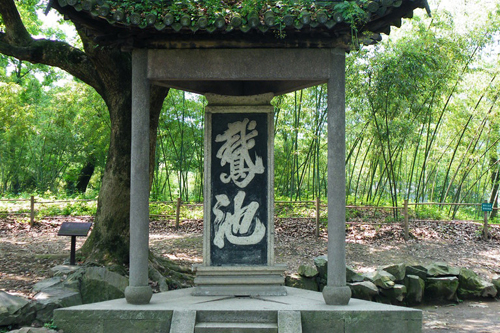
Lan Pavilion
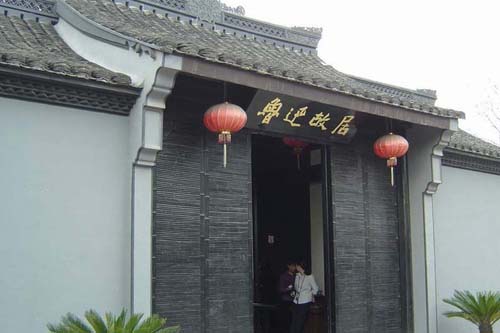
Lu Xun's Native Place
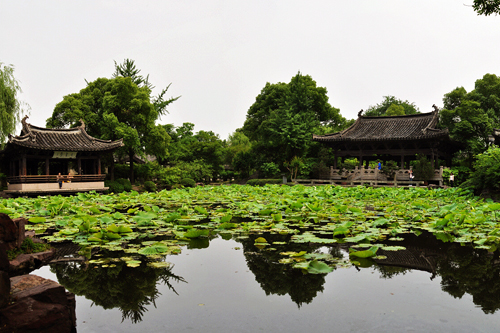
Shen Garden
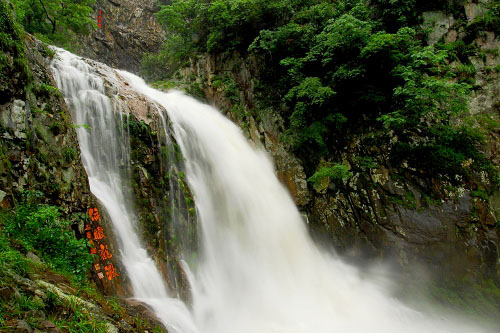
Wuxie Waterfalls
It borders Shangyu District on the east and Shengzhou Municipality and Zhuji Municipality respectively on the southeast and southwest. Keqiao District’s west and northwestern neighbor is Xiaoshan District. The north is the sea. Yuecheng District extends in the center of Keqiao District. Before October 2013, there was no Keqiao District but Shaoxing County. Situated at 29°42'02" to 30°19'15" at north latitude and 120°46'39" in the east longitude, the county stretched 46.6 kilometers from west to east and 68.5 kilometers from north to south. The total length of the county boarder was 356.59 kilometers and the total area used to be 1,392 square kilometers before July 2000. In July 2000, five townships, namely, Dongpu, Jianhu, Gaobu, Mashan and Doumen, were cut off like a circle and went under the jurisdiction of Yuecheng District. This move reduced the county’s total area to 1,152.3 square kilometers. In October 2013, the State Council agreed to abolish Shaoxing County and set up Keqiao District.
Shaoxing is one of the famous historical cities in China. Numerous accomplished scholars or figures were born or lived here such as Yu the Great in the far ancient China and the famous writer Lu Xun in modern times. This city thus boasts the title of ‘City of Personages’. It was also the seat of the ancient Yue Kingdom during the Spring and Autumn Period (770 BC-476 BC) and quite prosperous during that time. Owing to its long history, this old city reveals less vanity and tinsel than some modern metropolis. What's commonly seen and felt here is a kind of leisurely and peaceful ambience.
Although the city appears quite simple and peaceful, the economy here has been developing rapidly, especially with regards to the textile industry. Thanks to the advanced silkworm rearing over thousands of years, silk products from Shaoxing are famous all over China for their high quality as well as a large quantity. Every year, there are various textile exhibitions and fairs featuring silk goods production. The China Light & Textile Industrial City in Keqiao District is one of the largest professional marketers of light and textile products and the largest marketers of cloth in Asia.
With a history of thousands of years, Shaoxing is renowned for the abundant tourism resources including cultural relics like the Yu the Great Mausoleum and many residences of famous figures in Chinese history. In fact, Shaoxing is recognized as one of the Famous Historical and Cultural Cities in China. Moreover, as a city to the south of the Yangtze Delta, the natural scenery in Shaoxing is totally charming and varied with an intriguing landscape of numerous green hills and clean waters.

Great Buddha Temple in Xinchang

Nineteen Peaks through Cliff
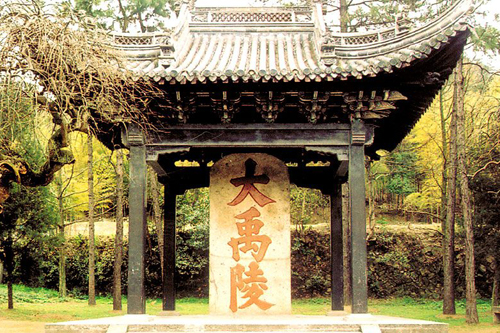
The Tomb of Dayu
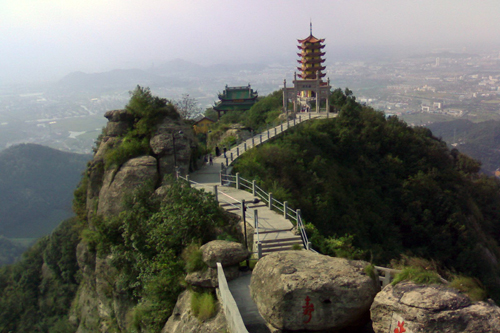
Kuaiji Mountain

Jian Lake
A highlight on tour of Shaoxing is surely the delicacies here. As an important branch of Zhejiang Cuisine, Shaoxing dishes are famous for their rural style in ingredients, such as duck fed with vinasse --- the sweet residue of the distillery process--- and the pollution-free local chickens. Owing to this raw material, Shaoxing dishes serve up a fresh taste teeming with nutrition.
Shaoxing is also known variously as the ‘City of Waters’, ‘City of Bridges’, ‘City of Calligraphy’, ‘City of Tea’, and ‘City of Scholars’. It gives off an image of an elegant and peaceful locale with deep cultural connotations, south of the Yangtze River.
With its subtropical monsoon climate, Shaoxing weather is warm and moist with four distinct seasons. The average annual temperature is 16.5 C (61.7 F). The highest temperature is usually in July and the highest record is 39.5 C (103.1 F), while the lowest temperature is -10.1 C (13.82 F) in January. The average annual rainfall is 1438.9 millimeters (56.6 inches). Shaoxing has heavy rainfall through two rainy seasons: one during March to June and the other during September. In the rainy seasons, humidity is high and feels humid and hot. During April and May, although still in the rainy season, the temperature is comfortable.
Some of the local festivals are held at this time like the Lanting International Calligraphy Festival and the Peachblossom Festival in Hou Mountain. During May to October, the waterfalls in Wuxie Scenic Spot are much more spectacular because of the sudden increase in water run-off in the rainy season. Autumn in Shaoxing is the most pleasant season, for the sky is clear and the air is crisp. There is less rain during this season.
(Revised by the site)